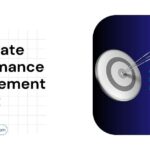Competitive intelligence (CI) represents a systematic and indispensable practice for organizations aiming to thrive in dynamic market environments. It involves the methodical gathering and rigorous analysis of information pertaining to competitors, customers, and broader market conditions. The core objective of CI is to deepen market understanding, facilitate the formulation of robust competitive strategies, and ultimately enable companies to secure a market advantage and fortify their market position. This discipline moves beyond conventional guesswork, fostering a transition to data-driven decision-making that allows businesses to anticipate market shifts, identify emerging opportunities, and sustain their competitive edge.
The practice of competitive intelligence is characterized by its dual nature: tactical CI, which addresses immediate, short-term operational needs, and strategic CI, which focuses on long-term organizational objectives. The comprehensive application of CI contributes significantly to reducing inherent business risks, optimizing operational efficiencies, and driving sustainable growth. The consistent emphasis on competitive intelligence as an “essential” practice and a “core tool” suggests that its effective implementation transcends mere operational improvement. It signifies a profound cultural and procedural transformation within an organization. This implies that competitive intelligence is not merely a departmental function but a deeply embedded operational philosophy, necessitating a broader organizational commitment and cultural shift. Such integration across various departments fosters a data-centric mindset, ensuring continuous learning and adaptation, thereby making intelligence a fundamental part of the company’s core operational framework.
What is Competitive Intelligence?
Competitive intelligence (CI) is formally defined as the systematic process of collecting and analyzing information about competitors, customers, and the general market landscape. This structured approach differentiates CI from informal market observations, providing a rigorous framework for strategic insights. The primary goal of CI is to enhance an organization’s comprehension of its market, enabling the development of effective competitive strategies that allow companies to gain a significant advantage and solidify their market standing. Through CI, businesses are empowered to anticipate market shifts, identify emerging opportunities, and make data-driven decisions that support long-term growth and resilience. It is crucial to underscore that CI is an entirely legal and ethical practice of business competition, relying solely on information analysis, which fundamentally distinguishes it from illicit methods such as industrial espionage. Adherence to these ethical boundaries is paramount for responsible and sustainable business conduct.
The Strategic Imperative of CI
Competitive intelligence is not a singular event but an essential, continuous, and frequent process vital for sustained business success. Its ongoing nature ensures that companies remain abreast of rapid technological advancements, evolving customer behaviors, and the dynamic competitive landscape. This continuous monitoring enables businesses to maintain their competitive advantage by providing deep insights into competitors’ baseline behaviors. Organizations can detect deviations from these norms, which serve as early warning signals for potential market or competitor changes, allowing for proactive adjustments.
By compelling a deeper understanding of the market, competitors, and customers, CI facilitates the design of products and services that are not only aligned with market demands but also genuinely address customer needs and pain points, thereby identifying key differentiators. The practice also plays a critical role in reducing inherent business risks and optimizing operational efficiency by uncovering critical patterns and actionable insights from diverse data sources.
While the term “Competitive Intelligence” inherently suggests a focus on rivals, multiple definitions and breakdowns within the available information broaden its scope significantly. CI explicitly involves information about “competitors, customers, and general market conditions”. It encompasses intelligence concerning an organization’s “overall market, products, and customers”. This comprehensive framing indicates that CI is designed to provide a 360-degree view of the external environment. Businesses that adopt a narrow view of CI, focusing solely on competitor tracking, will inevitably miss critical opportunities and fail to adequately mitigate risks stemming from broader market shifts or evolving customer demands. A truly effective CI program integrates observations from the entire ecosystem—market dynamics, customer behaviors, and competitor actions—to provide a more robust and nuanced understanding, leading to superior strategic decision-making and more sustainable competitive advantage. This holistic perspective elevates CI beyond simple competitor profiling.
Furthermore, the current competitive field is characterized by fleeting advantages, where “any edge or unique value proposition…is small, with competitors quick to find ways to match your product or service”. Simultaneously, the “age of big data” provides businesses with “vast amounts of information, which can be analyzed at a rapid pace thanks to technological advances”. This combination of rapid competitive imitation and abundant, fast-analyzable data points to a new dynamic in competitive advantage. In this environment, sustainable competitive advantage is no longer about establishing a fixed, unassailable lead. Instead, it is about dynamic adaptability and continuous responsiveness. CI provides the necessary early warning signals and ongoing observations to detect subtle market and competitor shifts, allowing companies to react swiftly and intelligently. This transforms data into a crucial strategic asset, enabling continuous differentiation and agility rather than relying on a one-time advantage. The speed and precision of CI, facilitated by technological advances, are becoming as vital as the breadth of information gathered.
Key Terms in Competitive Intelligence
Competitive intelligence is comprised of several interconnected components:
Market Intelligence: This involves the gathering and analysis of data concerning the broader environment in which a company operates. This includes crucial information on market size, projected growth over time, and the level of market saturation with existing competitors.
Customer Behavior Analysis: This is a systematic study focused on understanding how individuals interact with a brand or product. It encompasses their purchasing patterns, preferences, and overall engagement, often extended to analyzing the clientele of competitors to gain comparative insights.
Competitor Intelligence: This specific aspect of CI focuses on analyzing the operations and strategies of direct and indirect competitors. It utilizes data such as cost structures, profit margins, and revenue growth to inform and refine a company’s own business decisions.
Types of Competitive Intelligence
Competitive intelligence is broadly categorized into two primary types, each serving distinct strategic horizons and operational needs within an organization. Understanding these distinctions is crucial for effective CI deployment and maximizing its impact.
Strategic Competitive Intelligence (Long-term focus)
Strategic CI is specifically designed to inform long-term business direction and overarching organizational goals, providing a macro view of the market and competitors. It looks ahead to future opportunities and potential risks that could reshape the industry. Its purpose is to support critical long-term decisions related to market expansion, significant product innovation, diversification into new segments, and anticipating future threats and opportunities. It aims to build a comprehensive strategic roadmap for success. Examples of data tracked include monitoring mergers and acquisitions within the industry, identifying new market opportunities, analyzing long-term trends in consumer behavior, tracking the adoption of emerging technologies, and assessing potential industry disruptions. For instance, monitoring a competitor’s sustainability initiatives can inform long-term investment decisions in reusable materials. Strategic CI is valuable for all departments and informs overall business strategy, such as calculating long-term market share trends or understanding broad shifts in the competitive landscape.
Tactical Competitive Intelligence (Short-term focus)
Tactical CI is useful for informing short-term decisions, enabling rapid responses to immediate threats or emerging opportunities. It focuses on the immediate future, typically within the current or next quarter. Its purpose is to address pressing, real-time needs and help operational teams react swiftly to immediate actions taken by competitors. Examples of data points include monitoring real-time pricing changes, updates to product features, new marketing campaign launches, or tracking daily news and company updates within a specific sector. For example, if a coffee bean distributor raises prices, tactical CI can help identify cheaper alternatives. Tactical CI is particularly valuable for sales and marketing departments, informing day-to-day tasks, helping create up-to-date “battlecards” for sales teams, and allowing for quick adjustments to online presence based on competitor website changes or SEO rankings.
Integration of Approaches
For optimal and comprehensive results, businesses should integrate both strategic and tactical competitive intelligence. Strategic CI provides the foundational understanding and long-term vision, while tactical CI offers real-time observations that refine execution and allow for agile responses. Both types, when deployed appropriately, offer significant opportunities to inform business decisions and strengthen overall strategy to gain a competitive advantage.
The synergy between strategic and tactical CI is crucial for dynamic advantage. While the two types are distinct in their time horizons, their combined use is essential. Strategic intelligence sets the broad direction and identifies major shifts, while tactical intelligence provides the agility to navigate immediate challenges and capitalize on fleeting opportunities within that broader framework. A truly effective competitive intelligence program establishes a continuous, symbiotic feedback loop between these two approaches. Strategic observations provide the overarching context and long-term vision, ensuring that short-term tactical responses are aligned with broader organizational goals. Conversely, tactical intelligence provides the real-time data necessary to validate, adjust, or even pivot long-term strategic plans in response to dynamic market conditions. This dynamic interplay ensures both foresight and immediate responsiveness, which is crucial for sustained competitive advantage in fast-paced and unpredictable markets. Without this synergy, strategic plans risk becoming irrelevant, and tactical actions might lack direction.
| Aspect | Strategic Competitive Intelligence | Tactical Competitive Intelligence |
| Time Horizon | Long-term (e.g., 3-5+ years) | Short-term (e.g., current quarter, immediate future) |
| Primary Goal | Inform long-term business direction, anticipate future market shifts, identify significant opportunities/threats | Inform day-to-day tasks, enable quick responses to immediate competitor actions, capitalize on fleeting opportunities |
| Key Focus Areas | Industry disruption, market expansion, product innovation roadmaps, mergers & acquisitions, long-term technology trends, broad consumer behavior shifts | Pricing changes, specific product feature updates, marketing campaign launches, sales battlecards, immediate news and company updates |
| Primary Beneficiaries | Senior leadership, R&D, corporate strategy, all departments for overall business planning | Sales teams, marketing teams, product management, operational teams |
| Examples | Monitoring competitor sustainability initiatives for long-term investment decisions, assessing potential new market entry, calculating long-term market share | Adjusting pricing in response to a competitor’s price drop, creating a battlecard for a new competitor product, fine-tuning SEO based on competitor keyword changes |
Key Sources for Gathering Competitive Intelligence
Effective competitive intelligence relies on systematic data collection from a diverse array of sources. These sources can be broadly categorized into publicly available online information and human intelligence, all while adhering to strict ethical guidelines.
Publicly Available Online Sources
The digital footprint left by organizations provides a wealth of information for competitive intelligence. Competitors’ websites and marketing campaigns are robust resources for understanding rivals’ priorities, target audiences, and overall strategic direction. These platforms can reveal specific details such as product or feature upgrades, new job openings or hires, modifications in messaging and positioning, marketing initiatives (e.g., webinars or events), pricing structures, and news announcements. Analyzing homepages and product pages provides observations into their current priorities and target customer pain points.
Social media platforms offer real-time updates on competitors’ marketing campaigns, customer engagement levels, and upcoming product or service launches. Social listening tools can help identify trending industry topics, competitor strategies, and public reactions to new initiatives. Press releases and earned media coverage officially signal significant company moves, including product launches, strategic partnerships, or changes in leadership. Tracking these allows businesses to anticipate strategy shifts and expansion plans.
Analysis of job postings on recruitment websites can reveal competitors’ growth plans and expansion strategies. The types, quantities, and geographical locations of posted roles can hint at new products, services, investments, or market expansion intentions. Customer reviews and online forum discussions, including platforms like Reddit , highlight competitors’ strengths, weaknesses, and their customers’ pain points. This information is invaluable for improving one’s own brand and identifying differentiation opportunities.
For publicly traded companies, regulatory filings and investor reports, such as Securities and Exchange Commission (SEC) reports and quarterly Form Q-10 filings, offer publicly available, in-depth financial and strategic information, including earnings, identified risks, and future plans. Furthermore, analyzing search engine optimization (SEO) tactics, including opponents’ keywords, backlink profiles, domain authority, and technical SEO performance, can provide clues about market niches or opportunities they are exploring, and identify gaps in one’s own SEO strategy. Subscribing to competitor newsletters can provide observations into their content marketing strategies and current campaigns. For brick-and-mortar businesses, historical and predictive in-person visit data can offer competitive observations.
The sheer volume and specificity of online sources listed across multiple examples strongly indicate that the vast majority of actionable competitive intelligence can now be derived from publicly accessible digital data. This digital exhaust provides a rich, continuous stream of information about competitor activities, strategies, and market perceptions. The “age of big data” has amplified the importance of this digital footprint. Companies must develop sophisticated capabilities in digital intelligence. This requires not only the implementation of advanced digital monitoring tools (many AI-powered, as noted in ) but also the cultivation of skilled analysts proficient in data extraction, aggregation, and pattern recognition from vast, unstructured online datasets. The ability to effectively leverage and interpret this digital footprint is becoming a core competency for modern CI, allowing for scalable and often real-time observations that were previously unattainable.
Human Intelligence Sources
While digital sources are abundant, human intelligence remains a vital component of competitive intelligence. Direct conversations and systematic analysis of customer behavior can reveal purchasing patterns, preferences, and interactions. Customers are frontline sources for candid perspectives on competitors’ products and services. Internal colleagues, particularly sales teams, are on the front lines, gathering real-world observations of the competitive landscape, including thoughts, perceptions, and intuitions that are often not captured through online or quantitative analysis.
Although ethical boundaries must be strictly maintained, publicly available employee reviews (e.g., on job sites) can offer observations into competitor employee satisfaction, retention, and internal culture. Industry conferences and trade shows provide excellent opportunities to gather intelligence through direct observation, networking, and attending presentations. Vendors and suppliers, who often work with multiple companies in an industry, can offer candid, though carefully vetted, perspectives on competitors’ operations, product quality, or supply chain practices.
Despite the advancements in artificial intelligence, human intelligence remains vital for understanding human psychology, engaging in conversations with stakeholders, and conducting real-world research. This suggests that even with advanced AI capabilities, there are qualitative nuances and underlying motivations that only human interaction and interpretation can uncover. AI can process
what is happening, but human intelligence often reveals why it is happening and what it truly means in a nuanced context. The most effective competitive intelligence programs will adopt a hybrid approach, strategically combining the scale, speed, and analytical power of AI-driven digital intelligence with the qualitative depth, contextual understanding, and nuanced observations provided by human intelligence. This means CI roles will increasingly demand a dual skill set: proficiency in data analytics and technological tools, alongside strong interpersonal, qualitative research, and critical thinking abilities to interpret human-derived information. Relying solely on one type of source will lead to an incomplete or potentially misleading intelligence picture.
Ethical Considerations in CI Gathering
It is paramount to reiterate that competitive intelligence is a legal and ethical practice, fundamentally distinct from illegal industrial espionage. Businesses must never mislead or misrepresent themselves when gathering information. Strict avoidance of illegal activities such as hacking into systems or paying for confidential, proprietary information is essential. The primary focus should always be on gathering and analyzing publicly available information. Respect for intellectual property rights and confidentiality agreements is mandatory. Maintaining transparency within legal and ethical boundaries is also a key principle. Organizations should adhere to a strict code of ethics, promoting it internally within the company, with third-party contractors, and across the entire profession.
| Source Category | Specific Source | Examples of Information Gathered | Primary Purpose/Observation |
| Online/Public | Competitor Websites & Marketing | Product features, pricing, messaging, job openings, strategic priorities | Understanding product strategy, market positioning |
| Social Media | Marketing campaigns, customer engagement, product launches, trending topics | Brand perception, real-time market pulse, marketing effectiveness | |
| Press Releases & Earned Media | Company moves, partnerships, leadership changes | Strategic shifts, expansion plans | |
| Job Postings | Growth plans, new product/service investments, skill gaps | Future direction, R&D focus, talent strategy | |
| Customer Reviews & Online Forums | Strengths, weaknesses, pain points, differentiation opportunities | Product improvement, customer satisfaction, market gaps | |
| Regulatory Filings & Investor Reports | Financials, risks, future plans, earnings | Financial health, strategic intent, performance benchmarking | |
| SEO Tactics | Keywords, backlinks, market niches, content strategy | Digital visibility, market opportunities, content gaps | |
| Human/Primary | Customers | Purchasing patterns, preferences, pain points, competitor perceptions | Customer needs, product differentiation, market demand |
| Sales Teams & Colleagues | Competitive landscape observations, market observations, customer feedback | Real-time market dynamics, sales strategy, competitive positioning | |
| Industry Conferences & Trade Shows | New technologies, partnerships, competitor presence, industry trends | Innovation trends, networking opportunities, competitor activity | |
| Vendors/Suppliers | Competitor operations, product quality, supply chain observations | Operational efficiency, cost structures, supply chain vulnerabilities |
Applications and Uses of Competitive Intelligence in Business
Competitive intelligence is a powerful strategic tool, enabling businesses to make informed decisions across various functions, from product development to risk management, ultimately driving growth and sustaining competitive advantage.
Informing Strategic Decisions and Gaining Advantage
CI provides a systematic approach to gathering and analyzing information, which is then leveraged to make strategic business decisions and gain a significant competitive edge. It empowers companies to anticipate market trends, proactively identify emerging opportunities, and effectively mitigate potential risks. By deeply understanding competitors’ strategies and tactics, businesses can pinpoint areas for internal improvement and foster innovation, leading to enhanced overall performance and accelerated growth. Fundamentally, CI facilitates a crucial shift from reactive responses to proactive, informed decision-making, providing a panoramic view of the entire competitive landscape.
Enhancing Market Positioning and Identifying Gaps
CI is instrumental in discovering untapped market opportunities. By analyzing a competitive landscape graph or similar representations, businesses can precisely identify their brand’s standing relative to others in the market. This analysis critically reveals market gaps—those areas where current offerings from competitors do not fully meet consumer needs. Understanding these gaps allows a company to strategically position its brand uniquely, thereby attracting new customers and reinforcing loyalty among existing ones. Before launching a new startup or product, CI can help spot these market gaps, inspiring innovative product and service differentiation that resonates with unmet demand.
Optimizing Product Development and Pricing Strategies
Competitive intelligence serves as a catalyst for continuous innovation and adaptation. By meticulously identifying the strengths and weaknesses of competitor products (e.g., through performance benchmarks, customer reviews, and feature comparisons), businesses can innovate strategically. This observation enables them to enhance their own product features, improve usability, or even introduce entirely new offerings that are precisely aligned with market demands and customer needs. This transforms product development from an internally focused, potentially insular process into an externally informed, market-driven imperative. It provides the necessary intelligence to ensure that innovation efforts are targeted, responsive to evolving market needs, and strategically differentiated from competitor offerings. This significantly reduces the risk of developing products that miss market demand or are quickly rendered obsolete. Thus, CI becomes a core, ongoing input for research and development (R&D) and product lifecycle management, ensuring sustained relevance and competitive edge.
CI offers invaluable observations into prevailing market pricing structures. A pricing distribution chart, illustrating a company’s pricing relative to competitors’, can guide the refinement of pricing models. This allows for optimal price setting that balances profitability with market competitiveness, potentially including the implementation of dynamic pricing models for services like ride-shares and airlines.
Refining Marketing, Sales, and SEO Efforts
CI provides granular observations into competitor marketing tactics, pricing strategies, and customer feedback. By comparing metrics such as engagement rates, follower counts, and posting frequency on digital platforms, businesses can fine-tune their online presence to outperform competitors. It also directly informs sales departments, providing them with critical intelligence for their daily interactions. For SEO, competitive analysis can reveal missing niche keywords that competitors might be overlooking, allowing a business to capture unoccupied digital real estate. Leveraging these observations helps craft a robust SEO and content strategy that significantly improves search rankings and elevates the overall user experience. This involves analyzing competitor keywords, backlink profiles, and domain authority.
Risk Management and Anticipating Market Shifts
CI plays a crucial role in proactive risk management and timely opportunity identification. By staying continuously informed of what competitors are doing and the underlying reasons for their actions, businesses can anticipate market shifts before they fully materialize, thereby mitigating potential risks. This foresight allows companies to prepare effectively for significant market or competitor changes and make truly informed, strategic decisions that safeguard their future. Ultimately, integrating CI into strategic planning helps in crafting a resilient strategic framework, enabling companies to anticipate competitive moves and technological shifts, and navigate uncertainties with greater confidence.
The applications of CI are explicitly shown to span multiple business functions: strategic planning , product development , marketing , sales , and even financial benchmarking. The emphasis on “leveraging data to understand the market and their competitors to make informed, strategic decisions” indicates that for these diverse applications to be effective, the intelligence gathered by one department must be accessible and relevant to others. For CI to achieve its full potential, its observations cannot remain siloed within individual departments. It necessitates fostering a robust data-sharing culture and promoting deep cross-functional collaboration within the organization. For example, market intelligence gathered by the marketing team about competitor campaigns should directly inform product development decisions on feature prioritization, and sales observations should feed back into strategic planning. This integrated approach breaks down traditional departmental barriers, fostering a more unified, data-driven organizational strategy where all efforts are grounded in shared, comprehensive market realities.
Foundational Frameworks for Competitive Intelligence Analysis
To effectively analyze the vast amounts of data gathered, competitive intelligence leverages established analytical frameworks. These models provide structured approaches for interpreting information, identifying patterns, and deriving actionable observations that inform strategic decision-making.
Overview of Key Analytical Models
- SWOT/TOWS Analysis: This widely used framework analyzes an organization’s (or a competitor’s) internal Strengths and Weaknesses, alongside external Opportunities and Threats. It helps in understanding an entity’s overall strategic position, identifying potential areas for growth, and recognizing inherent risks. The TOWS analysis builds upon SWOT by reversing the focus, asking how a company can proactively seize opportunities and mitigate/avoid threats by leveraging its strengths and addressing its weaknesses.
- Porter’s Five Forces Analysis: Developed by Michael E. Porter, this framework examines five key competitive forces that collectively influence an industry’s competitive intensity and overall attractiveness (profitability). These forces are: competition among existing firms, the threat of new entrants, the bargaining power of suppliers, the bargaining power of buyers (customers), and the threat of substitute products or services. It helps companies gauge how competitive and profitable an overall industry is and provides a structured way to understand the underlying forces driving competition within their specific industry.
- Porter’s Four Corners Analysis: Another framework by Michael E. Porter, this model focuses on predicting competitors’ future behavior. It considers two motivational factors (drivers and management assumptions about their own capabilities and the industry) and two action-oriented factors (their stated strategy and actual capabilities to execute it). The goal is to anticipate how key competitors might react to market changes, industry disruptions, or specific strategic moves made by one’s own company.
- PEST Analysis: This framework involves analyzing the broader macro-environmental factors that can influence an industry: Political, Economic, Social, and Technological. It provides a broader context for understanding the external forces that shape the competitive landscape, helping identify trends and potential impacts that affect all players in the market.
- Competitor Profiling: This involves systematically documenting and analyzing key competitors’ strategies, resources, capabilities, and market behaviors. It includes gathering specific details such as the number of employees, market share, names of the management team, product categories, total revenue, funding, and website URLs. The aim is to build a thorough, detailed understanding of specific competitors, which is crucial for informed strategic planning and targeted competitive responses.
- Perceptual Mapping: A visual representation that illustrates how consumers perceive different competitors in relation to various product attributes, benefits, or dimensions. This tool helps identify market gaps, areas where consumer needs are not fully met, and opportunities for a company to differentiate its offerings in the minds of its target audience.
The “age of big data” and the availability of “vast amounts of information” present both opportunities and challenges. Without a structured approach, this abundance of data can lead to information overload or analysis paralysis. The various frameworks listed provide systematic methodologies for organizing, categorizing, and interpreting this massive influx of data. They act as filters, helping analysts to discern relevant patterns and relationships from noise. The effectiveness of competitive intelligence in the big data era is not solely about the volume of data collected, but critically about the ability to structure and interpret that data meaningfully. These analytical frameworks serve as essential cognitive tools and analytical lenses, transforming raw, disparate data points into coherent, actionable observations by highlighting strategic implications and causal relationships. This underscores the evolving role of CI analysts, who must be not just adept data gatherers but also skilled strategists capable of applying these sophisticated models to derive true intelligence.











